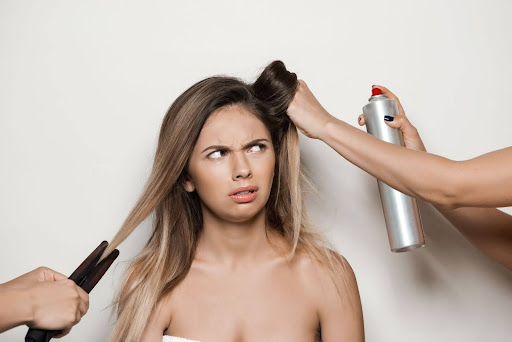
Hair Relaxer Science: Understanding the Link to Cancer
In recent years, the debate over hair relaxers and their potential health risks has heated up. This is particularly true of their link to various types of cancer. To get a thorough understanding of this concern, this blog discusses the related scientific findings.
The Science Behind Hair Relaxers
Curly hair is straightened with hair relaxers, which alter the protein structure of the hair. These products contain active chemicals, such as lye and no-lye relaxers. They work by penetrating the hair shaft's cortex and altering the natural curl pattern. While hair relaxers provide the desired aesthetic result, they expose users to a variety of chemicals.
The active chemicals in hair relaxers, such as cyclosiloxanes, parabens, diethanolamine, formaldehyde, sodium hydroxide (lye), and sodium thioglycolate are concerning. Notably, formaldehyde, a known carcinogen, poses significant breathing and lung problems. Products labeled as formaldehyde-free may still release this harmful chemical when heated.
Understanding the Concern of Chemicals
The primary concern with endocrine-disrupting chemicals found in hair relaxers stems from their ability to mimic the body's hormones. Phthalates, for example, are solvents found in cosmetics such as hair relaxers. Its long-term exposure can cause liver, lung, reproductive system and, kidney damage. Also, women who regularly use hair straightening or relaxing chemicals are 31% more likely to develop breast cancer.
Moreover, these endocrine disruptors can increase estrogen levels in the body. It raises the risk of uterine and ovarian cancer, especially affecting young women. Toxic chemicals in hair relaxers may increase the possibility of obesity, diabetes, and neurological issues. They're also linked to immune, thyroid disorders, and more serious conditions like Alzheimer's and cardiovascular diseases.
These alarming concerns related to hair relaxers have prompted a surge in hair relaxer lawsuits. The Northern District of Illinois is presently handling a large number of these cases. Multidistrict litigation (MDL) is underway to address the claims collectively.
Chemical Hair Straighteners and Cancer Risk: More Women, Stronger Link
A study by the American Cancer Society discovered a link between risks of uterine cancer and chemical hair straighteners. The study monitored over 33,000 women for nearly 11 years. It found that frequent straightener users had over twice the uterine cancer risk.
This association is particularly alarming for African women, who are more frequent users and typically begin at a younger age. Chemical hair straighteners have been heavily marketed towards Black women, making them disproportionately affected by these risks. Up to 95% of self-identified Black women in the U.S. have reported using hair relaxers, which has contributed to increased rates of uterine cancer among this demographic.
As of late 2023, the MDL included nearly 8,000 actions. The effort highlights the widespread concern and potential for these cases to become as major as other major MDLs. Victims of hair relaxer-related cancers are pursuing claims for compensation covering a range of damages from medical expenses to suffering. Given the increasing number of hair relaxer cancer cases, hair relaxer attorneys are actively offering free consultations to those affected.
Frequently Asked Questions
Which hair relaxer brands fall under the lawsuit?
Different brands of hair relaxers may raise the risk of cancer. Currently, lawsuits have been filed against L'Oreal. SoftSheen, Strength of Nature, and Namaste are also named as defendants in the hair relaxer litigation.
Are hair relaxants being banned?
The FDA is moving towards a ban on hair relaxers containing formaldehyde. They cite its link to cancer and other serious health complexities. The initiation has been acknowledged by lawmakers and health advocates. There lies a disproportionate risk these products pose to Black and Latina women.
Which hair straightening treatment is safe?
The popularity of keratin treatments has significantly grown over recent years, and there's a positive reason for their acclaim. They are one of the safest hair straightening procedures available. Keratin, a protein, is a natural component of our hair. However, as we age and eat a poor diet, our protein content and keratin levels decrease.
Is any hair relaxer safe?
Parabens, phthalates, and other chemicals found in hair straighteners pose a greater risk to the scalp than other organic products. Even hair straighteners marketed as safer to use, containing no-lye relaxers, can pose risks.
To wrap things up, according to TorHoerman Law, the link between hair relaxers and cancer is a complex issue that intertwines health and law. Therefore, it is essential to monitor the outcomes and implications for both the legal and health landscapes.
As the hair relaxer litigation unfolds, consumers must stay informed about the serious risks related to chemical hair relaxer products. The hope is that this legal pressure will prompt cosmetic companies to reformulate their products to prioritize consumer safety.

Comments (0)